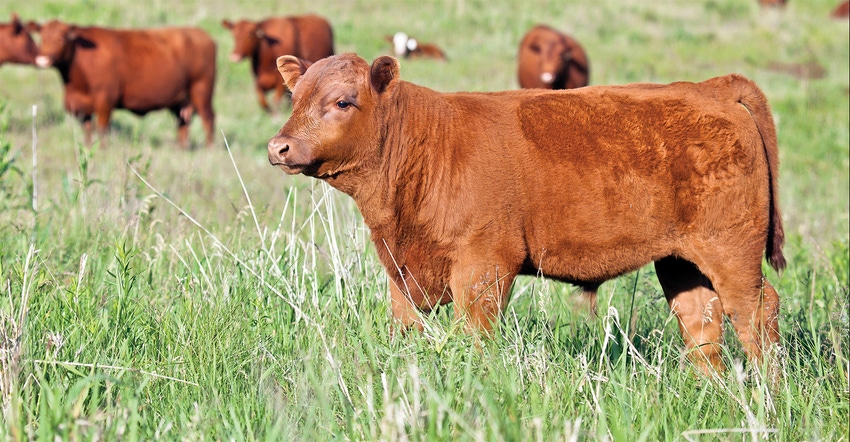Planning, early treatment key to successful BRD control in cattle
Preparation and use of fast-acting, broad-spectrum antibiotic can be difference maker.
November 23, 2020

Sponsored Content
Newly weaned cattle don’t always handle fluctuating temperatures and changing environments with ease, especially in the fall and winter when conditions can be more extreme. According to Dr. A.J. Tarpoff, Kansas State University Extension beef specialist, producers need a plan and the right products to most effectively deal with potential health problems that can arise with cattle as they arrive into feedlots.
“It all starts by working with your local veterinarian to develop a plan based on your operation and the condition of the cattle coming in,†Dr. Tarpoff says. “And it’s important to have the right products on hand to treat any sick animals as soon as they are identified because we know that early treatment with effective products leads to far better outcomes.â€
Dr. Tarpoff notes that as part of that planning process, producers should ask their vet about treatment programs and products that will be most effective for the cattle coming in, including dosage, type of administration, withdrawal timing, and efficacy. “These are all part of the conversation producers should have before cattle arrive. In addition, the Beef Quality Assurance guidelines, available at BQA.org, are another great resource and can provide additional information to help them best manage their cattle.â€
Along with proper planning and having appropriate treatment protocols in place, choosing and administering effective therapeutic products quickly to any sick cattle is also critical, says Dr. Eric Moore, director of technical services for Norbrook Laboratories. He notes that respiratory diseases in cattle, specifically Bovine Respiratory Disease (BRD), is one that producers will most likely encounter in the fall and winter due to rapidly changing weather conditions, weaning, transportation and comingling of cattle.
Norfenicol is a generic antibiotic that has been on the market for about four years now and one that fits well into livestock producers’ toolbox of health care products, according to Eric S. Moore, DVM, director of technical services for Norbrook North America. We caught up with Dr. Moore recently in Kansas to talk specifically about the product and the solution it provides for the treatment and control of BRD and other diseases. We also had the opportunity to catch up with Kansas beef extension veterinarian A.J. Tarpoff to get some management tips for dealing with and preventing cattle diseases in times of great weather fluctuation.
It’s important that producers monitor cattle during these times of stress and take immediate steps to treat sick animals as soon as they are identified, explains Dr. Moore. “As Dr. Tarpoff mentioned, the sooner producers can get sick animals treated with a fast-acting, broad-spectrum antibiotic, the better the chances are for getting that animal healthy and back into a more productive status. One antibiotic that fits this description is Norfenicolâ€
Norfenicol from Norbrook, the bioequivalent version of Nuflor, has been on the market for four years and is labeled for the treatment and control of BRD in cattle, as well as foot rot. As Dr. Moore explains, Norfenicol has some unique differences from the pioneer product, including being available in a more convenient and durable plastic hanger bottle, having a less viscous, more easily to syringe formulation and a shorter subcutaneous administration pre-slaughter withdrawal time.
“With Norfenicol, producers now have a florfecicol antibiotic option for treating and controlling BRD that’s much more convenient to use and administer, especially in colder weather when product viscosity can be a problem,†Dr. Moore says. “More importantly for the sick calf, it’s also a fast-acting antibiotic, getting to the lungs in as little as 30 minutes after injection. All these unique features of Norfenicol make it a highly effective and convenient product to use in treating BRD in cattle.â€
Because BRD can strike almost anytime cattle are stressed, especially when weather conditions fluctuate wildly in the fall, winter and spring, Dr. Moore advises producers to work with their veterinarians in advance and to be prepared to treat as soon as cattle show signs of illness. “Respiratory disease in cattle needs to be treated quickly and effectively with the best tools available and that are appropriate for the situation. Norfenicol has proven over the last four years to be one of the best products available for producers to use to treat and control BRD in their cattle.â€
About the Author(s)
You May Also Like



